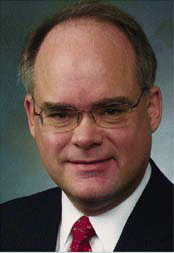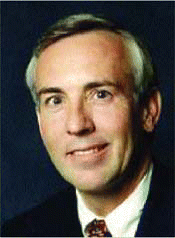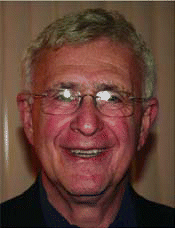The historical relationships between medical allergists and otolaryngic allergists have sometimes been characterized by distrust and socioeconomic turf battles. As recently as 10 years ago, said John H. Krouse, MD, PhD, Professor and Vice-Chair, Department of Otolaryngology at Wayne State University, and current president of the American Academy of Otolaryngic Allergy (AAOA), ENT allergists and general allergists “probably couldn’t have sat in an airport lounge and had a civil discussion.”
Explore This Issue
August 2007But in the past five to seven years, there has been a significant change in these professional relationships. Especially at the leadership level, allergists and otolaryngologists who practice allergy are cooperating and collaborating in numerous ways. Interdisciplinary initiatives focused on CPT coding and carrier advocacy issues, evidence-based practice guidelines, and plans for collaborative scientific projects are now yielding appropriate returns—as well as mutual respect—between these subspecialties. Leaders in the otolaryngology and allergy communities believe that these initiatives will, in time, also improve collegial relations at the community and private practice levels.
Why the Change?
Experts interviewed for this report point to multiple factors that have changed the tenor of interprofessional dialogue between otolaryngic allergists and general allergists. The first is that the incidence of allergy, asthma, and related conditions continues to trend upward. According to the American Academy of Allergy, Asthma and Immunology (AAAAI), more than 50 million Americans are affected by allergies; allergic rhinitis precipitates 16.7 million physician office visits a year; and the association between sinusitis and asthma has now been validated in scientific studies. In addition, the concept of the unified airway model, as outlined in the editorial in this issue by Bradley F. Marple, MD, Professor and Vice-Chair of the Department of Otolaryngology at the University of Texas Southwestern Medical Center, lends weight to the efficacy of interdisciplinary management of upper and lower airway disease. Recognition of this reality at the leadership level has triggered other seminal events, such as the invitation by the AAAAI for otolaryngologists to contribute review and editorial input into the Academy’s Allergy Report in 2000.
“If you look at the impact of allergic disease on the diseases that we treat, both in allergy and immunology as well as in otolaryngology, the overlap is amazing,” said Dr. Marple. The number of otolaryngologists who are practicing allergy is significant (approximately 4000, according to conservative estimates of the AAOA), said Harold C. Pillsbury, MD, President of the Triological Society, Chairman of the Department of Otolaryngology at the University of North Carolina Medical Center in Chapel Hill, and Chair of the AAOA’s Socioeconomic Committee. “At some point, when two people are doing similar things and it’s clear that they’re both going to be in this market for a while, it makes more sense to collaborate than to butt heads with each other.”
Most of those interviewed for this article agree that the opportunity to grasp these commonalities grew from confronting a shared dilemma: the prospect of reduced reimbursements.
Strength in Numbers
“Sometimes,” said Jami Lucas, Executive Director of the AAOA, “the best impetus for unified efforts is to have somebody else be the ‘bad guy.’” That’s precisely what occurred in 1999 and 2000, when the Centers for Medicare and Medicaid Services (CMS), then the Health Care Finance Administration, moved to change the definition and interpretation of a common allergy code used by both general allergists and otolaryngologists who practiced allergy. “We found,” said Ms. Lucas, “that we were a stronger unit working together than working separately or even in parallel.”
Allergists and otolaryngologists have worked with the CPT Editorial Panel and the Relative Value Unit (RVU) committees as a combined front, said Dr. Krouse. “In the past, there was more of an ‘us versus them’ kind of thinking: ‘we do it [practice allergy] our way; you do it your way; we do it better than you do; and let’s set up a line in the sand.’ And that doesn’t help anyone. It certainly doesn’t help the physicians, and it doesn’t help the patients who we care for.”
Donald W. Aaronson, MD, JD, MPH, Executive Director of the Joint Council of Allergy, Asthma and Immunology, pointed out that all the related societies, which used to compete, “have recognized that we’re far better off in these [government and payer relations] arenas working together than working at opposite poles. It has happened certainly with ENT and I think we have very good relationships with the otolaryngologic allergists. It [increased cooperation] has also happened, from our perspective, with pulmonary physicians, because allergy is also involved with pulmonary diseases.”
“The ‘bad old days’ are gone,” declared Dr. Aaronson. “We still have some differences, but those are perfectly okay. We respect each other and we’re able to work around the differences, because we realize that what we’re doing is for the good of all the people who take care of patients with these diseases.”
Tensions at the Local Level
Will the increased cooperation at the leadership level translate to smoother relationships at the private practice level? According to Dr. Marple, “the answer is partially yes and partially no. In the Dallas/Fort Worth area, we have very strong relationships between otolaryngologists and allergists.” As a result, he said, allergy patients treated in that community do very well.
Dr. Aaronson conceded that the general membership of the related societies may be a “few steps behind” the leadership when it comes to cooperating with related subspecialists. “When we talk to our cospecialists in our specific individual fields, we need to make them more aware of the level of cooperation that exists. The fact that we are cooperating does not mean that we each endorse each other’s practices with which we may not agree. It means that we respect each other. Then it becomes possible for everybody to work together.”
Sources point to the increased burden of allergic and respiratory disease, and to diminished numbers of internists who are doing residencies in allergy. “Each of our groups is small,” noted Dr. Krouse. “There are perhaps 4000 allergist/immunologists and about the same number of otolaryngologists doing allergy practice. If the prevalence of allergy is 25 percent to 30 percent, there are probably 75 million Americans with allergies, so this is a significant burden of disease.”
There may be plenty of patients to go around. “You don’t ‘own’ a condition,” Dr. Pillsbury maintained. “You see people because they come to you with related problems and you do the best you can to help them out. We’re not interested in doing anything that would inhibit the general allergists from treating nasal allergies as well as other parts of the body affected by allergy.”
Still, perceptions often die hard. There are multiple issues at the local level that create barriers between ENT allergists and general allergists, said Bob Lanier, MD, Past President of the American College of Allergy, Asthma, and Immunology (ACAAI), Clinical Professor of Pediatrics at the University of North Texas Health Science Center in Fort Worth, and an attending physician at Peking Medical College in Beijing. In some cities, he said, cooperation at the local level between the subspecialties has increased, depending on physician participation in insurance company panels. For instance, in the Fort Worth area, Dr. Lanier receives a fair number of referred patients from an otolaryngologist/allergist who is not covered on some plans. In turn, Dr. Lanier acts as a consultant with the otolaryngologist’s patients, and the two have a good working relationship.
However, communication between the subspecialists on the local level can be stymied by sensitive economic issues, said Dr. Lanier. Many of Dr. Lanier’s allergy colleagues object to what they perceive as “cherry-picking” techniques on the part of otolaryngologist/allergists. Dr. Lanier explains that medical allergists have cost-shifted their practices toward simple immunotherapy for allergic rhinitis. Billing for these treatments allows physicians to balance the other half of their practice loads, which often comprise patients with allergy-like complaints for whom the complaints do not result in immunotherapy. This shifting has become necessary to maintain billable levels of income for those practices. “The problem is that otolaryngologists have a unique ability, in many cases, to see easy allergy [cases] first and pick the ‘low-hanging fruit.’ That leaves the more difficult and revenue-negative patients—i.e., drug sensitivity, urticaria, and eczema—for the medical allergist,” said Dr. Lanier.
In Atlanta, said Stanley M. Fineman, MD, MBA, Immediate Past President of the Joint Council of Allergy, Asthma and Immunology, and an allergist with the Atlanta Allergy and Asthma Clinic, “there is some concern among board-certified allergists that we practice immunotherapy differently from some of our ENT colleagues. From the perspective of anyone who provides similar services, there is going to at least be some perceived competition.” Another concern, said Dr. Fineman, is that patients may not understand the differences between the training of a board-certified allergist and the training of an ear, nose, and throat allergist. “To the extent that this can sometimes be confusing to patients, then that is a concern.”
Role of Communication
The benefits of one-to-one communication cannot be overemphasized, ENT leaders note.
“There has definitely been a sea change in the relationship between allergists and otolaryngologists,” confirmed M. Jennifer Derebery, MD, Clinical Professor of Otolaryngology at the Keck School of Medicine at USC, in private practice at the House Ear Clinic in Los Angeles, and Past President of the American Academy of Otolaryngology—Head and Neck Surgery and AAOA. “We’ve always respected each other, but I think that there’s a much greater understanding about the level of training each specialty has. We have much in common in how we view clinical disease, but each specialty has its own unique way of analysis as well.”
Ms. Lucas recalled a three-and-a-half-year process to hammer out RUC parameters in cooperation with the Joint Council, in which one allergist remarked, in surprise, “Wow, you’re just like us!”
“We have been ‘siloed’ in specialized medicine for a long period of time,” remarked Dr. Marple of such misperceptions. “In terms of medical information, we have separate journals, and we do not specifically interact at that level. Economically, we’re in separate buckets. Educationally, we come at this a bit differently, but at the end of the day, we’re all taking care of the same pool of patients. But when we get out into the community, we do not have the opportunity to work and communicate with one another.”
Those separations will hopefully diminish as interdisciplinary initiatives go forward into the future, said Ms. Lucas. AAOA continues its outreach through the CME Committee, headed by Dr. Marple, and the Socioeconomic Committee, currently chaired by Dr. Pillsbury. She pointed to a current work group with the Joint Council regarding the US Pharmacopoeia’s plans to change the way allergy vials can be manufactured. Incorporated into AAOA’s strategic plan is specific language regarding improvements in interdisciplinary relationships. Ms. Lucas’s advice for private practice otolaryngologists is to take steps to contact their allergy colleagues and find ways to work in a collaborative manner. “The beauty of otolaryngology,” she said, “is that it offers the surgical management option. You can use that as your entrée to define yourself and your practice, and to reassure your allergy colleagues that you are not there to take away their patients.”
“Bridge-building is key,” emphasized Dr. Marple. “It should start with meeting people, and having a dialogue.” Dr. Marple advises new otolaryngologists moving into communities to call the local allergists and set up meetings. “Allergists are often threatened by otolaryngologists who are going to practice allergy,” he conceded. “I think you just have to open up a dialogue. Realistically, there are many untreated patients with allergies. There are many university systems where otolaryngology and allergy colleagues work well together and cross-train each other’s residents. In the community, this [level of cooperation] will probably take a little bit of creativity.”
Learning from Each Other
Otolaryngologists and allergists now have an increased presence at their colleagues’ annual society and academy meetings, fostering more interdisciplinary communication. “One of the things that’s nice about the leadership of the organizations coming together is that it provides opportunities to invite individuals from one specialty to the professional meetings of the other society,” said Dr. Marple. “There are often general allergists at our Academy meeting, and there are often otolaryngologists who present at the College and AAAAI,” added Dr. Derebery, who presented a poster this year at the AAAAI and participated in a symposium at the College. “I think our discourse at professional meetings definitely enhances our familiarity and cooperation.”
Dr. Lanier voiced praise for the bridge-building efforts of ENT leaders. “They have been really open-minded and accommodating, and that’s been very helpful. We allergists are still interested in their surgical skill set. For example, Dr. Marple has better experience with some forms of sinusitis, and I depend on him tremendously. If I had the opportunity, I would love to be in the same building with otolaryngologists; there is so much that they can teach us.”
Dr. Krouse pointed out that the learning process is a two-way street. He explained that one of the AAOA’s current initiatives is to emphasize evidence-based practice. “Much of what our colleagues as ENT allergists did only a few years ago was much more based on anecdote and individual preference than on science. Our general allergy colleagues have been much more rooted in science over the last generation than we have. I think the fact that we have taken on the need to be evidence-based has put us on a more equal footing with our allergy colleagues. There is more good research in the otolaryngology literature regarding allergy than there was a decade ago.”
Dr. Fineman added that maintaining good relationships with ENT colleagues is also beneficial to patients. “We see patients who have sinus disease or polyps and who obviously need to have surgery, so it’s important to have good relationships with ENT colleagues who provide that service. Obviously, both groups of specialists want the best for our patients and we want to improve patient care. As long as we continue to have that as our goal, then we should be able to strive for that.”
“We have to communicate, we have to work together, and as we do, we’ll build confidence and trust in one another,” said Dr. Marple. “But it’s going to be a slow process.”
©2007 The Triological Society





Leave a Reply